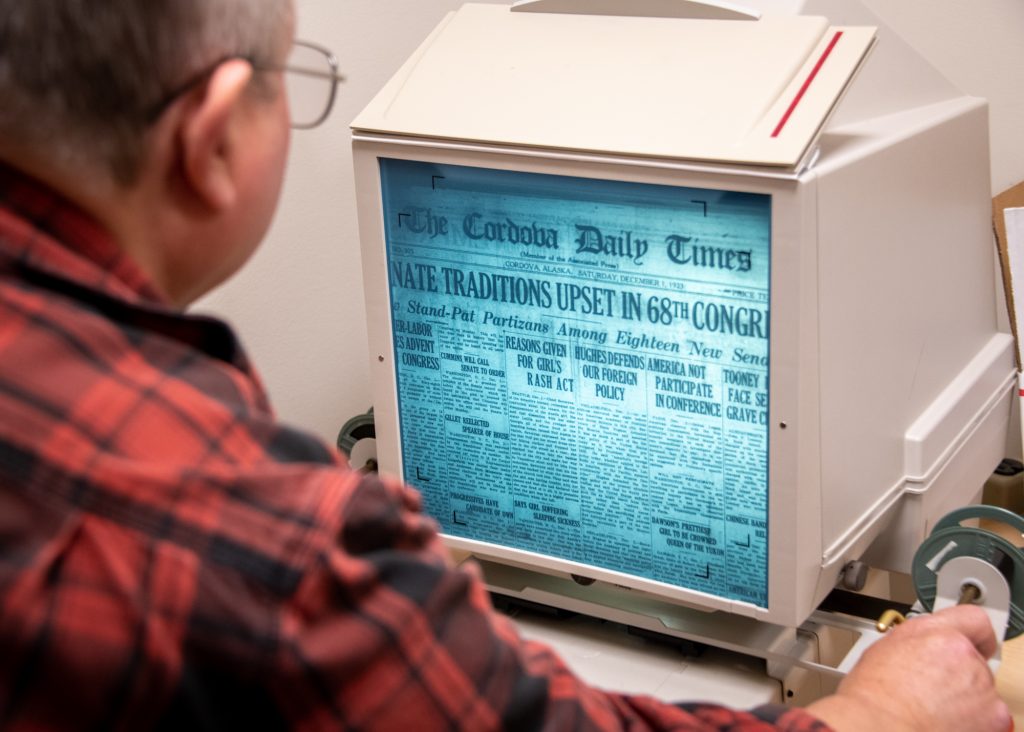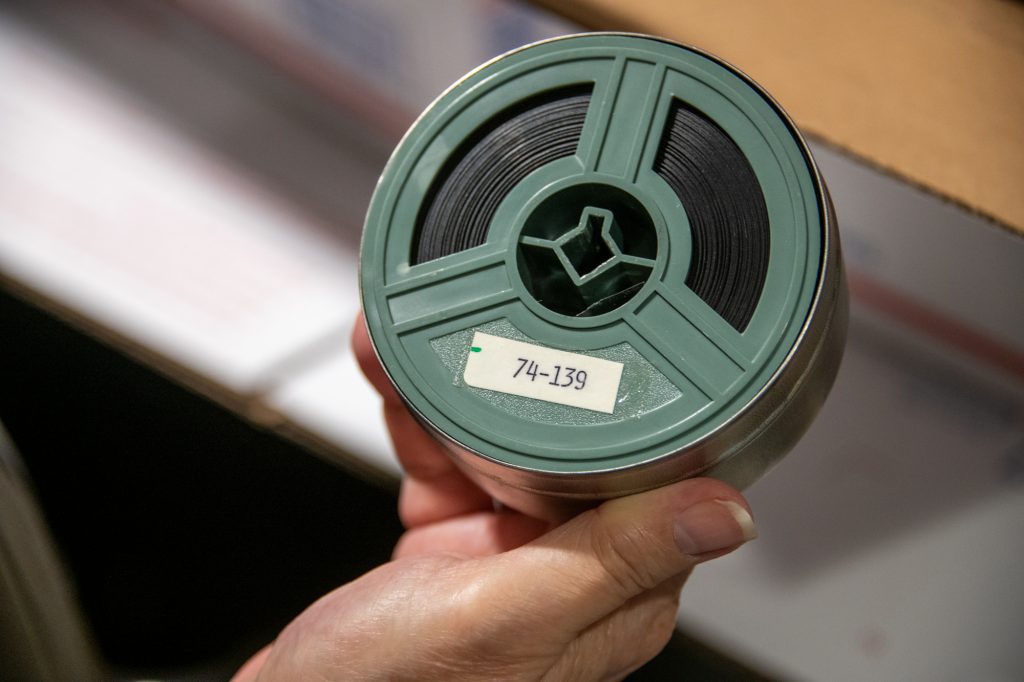
The Cordova Historical Museum is having 116 rolls of microfilm digitized, a step that museum administrators say will make it easier for Cordovans to learn about local history. The museum’s microfilm archives contain thousands of individual images, including full issues of The Cordova Daily Times and other publications from 1904 and later.
“The newspapers are a wealth of information for researchers and historians and for the staff so it will benefit and preserve the past for the community,” Vice Mayor Cathy Sherman, who volunteers extensively with the museum, wrote in an email.
Currently, in order to access this material, a roll of microfilm must be loaded into a viewer and scrolled using a hand crank. As well as being time-consuming and laborious, this arrangement subjects the microfilm to some wear and tear, and prevents it from being kept in a safer, but less accessible, storage space. When searching manually with a microfilm reader, the dense, text-heavy layouts of early-20th-century newspapers make it easy to miss items like obituaries, which sometimes occupy no more than a few square inches.
Now, with a $7,250 grant-in-aid from the Alaska State Museum, the Cordova Historical Society has begun the process of having these newspapers digitized. Cleaning and scanning the rolls of film is a delicate process that can be costly to have done with proper care, museum director Mimi Briggs said. The grant from the Alaska State Museum also supported the organizing of the museum’s archives and research room and the purchase of a new desk for that room, as well as funding staff training on archive management and protection through the American Association for State and Local History. The microfilm digitization project is also assisted by a $5,200 grant from Museum’s Alaska’s Collections Management Fund, which is funded in part by the Rasmuson Foundation.

“We’ve worked very hard for very many years to figure out how to get this done,” Briggs said.
Once the material has been digitized, visitors will be able to do their own research at the Cordova Historical Museum, though the archives may not immediately be publicly accessible via the internet, Briggs said. The original microfilm rolls will be relocated to the museum’s temperature-controlled collections storage room.
While the Library of Congress has digitized some of Cordova’s newspapers from 1914-1947 and made them publicly accessible on the internet, content within those newspapers is not searchable, making it potentially difficult to locate specific information.
Sherman retired as director of the Cordova Historical Museum and of Cordova Public Library in 2019, working with the museum since then in a volunteer capacity. Overhauling the museum’s neglected archives and research room was Sherman’s first major project as a volunteer, she said. Other priorities include finishing the museum’s permanent gallery exhibits and inventorying items in collections storage. Other volunteers, including Ira Grindle and Jim Casement, are also working to digitize the museum’s photo collection.





